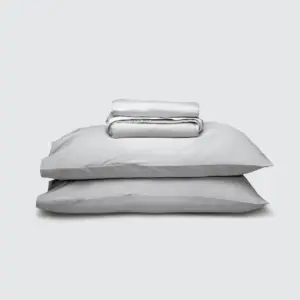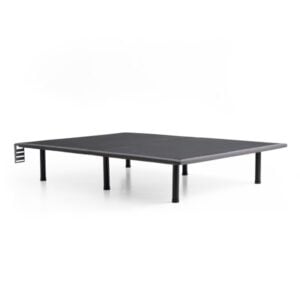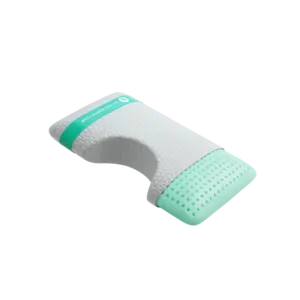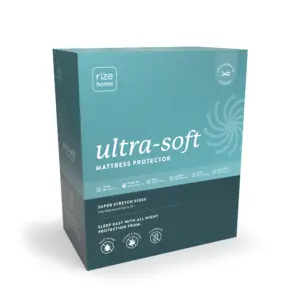Firm or Soft Mattress for Lower Back Pain: Making the Right Choice
Choosing the ideal mattress is essential for alleviating lower back pain and enhancing sleep quality. Individuals frequently grapple with the decision of whether a firm or soft mattress is more effective for easing discomfort. The consensus? A medium-firm mattress typically offers the best blend of comfort and spinal alignment for most people.
Key Takeaways:
– Firm Mattresses: Provide robust support but may lead to discomfort if they are excessively hard.
– Medium-Firm Mattresses: Generally recommended for striking a balance between support and comfort.
– Soft Mattresses: Offer pressure relief but may cause sinking and misalignment if they are too soft.
Understanding the significance of choosing the right mattress can be your first step toward restful sleep and reduced back pain.
Understanding Lower Back Pain
Lower back pain is a prevalent issue that complicates both comfort and sleep. Gaining insights into the causes of this discomfort is paramount in selecting a mattress that can provide relief.
Common Causes of Lower Back Pain
– Acute Pain: This type often appears suddenly and lasts for a brief duration, typically less than three months. Sharp and intense, it can be triggered by injuries or overexertion, such as lifting heavy objects or twisting awkwardly.
– Chronic Pain: Lasting three months or longer, chronic pain can vary in intensity, often stemming from previous injuries or sometimes manifesting without a specific cause.
– Lumbar Region: The lumbar area consists of the lowest five vertebrae and is particularly vulnerable to strain due to its curvature and the loads it supports daily.
– Poor Posture: Prolonged sitting or standing with incorrect posture can put stress on the muscles and ligaments in the lower back, gradually leading to discomfort and pain.
– Herniated Disc: This condition arises when the inner gel of a disc in the lumbar spine slips out, pressuring nearby nerves and causing severe pain, potentially accompanied by numbness or weakness in the legs.
– Facet Joint Damage: The facet joints, which connect the vertebrae, can degrade over time from repeated activities or poor posture, leading to inflammation and pain.
– Uncomfortable Mattress: An unsuitable mattress can worsen existing lower back pain. If your mattress is too firm or too soft, it may lead to poor spinal alignment. If you wake up with sharp pain that eases throughout the day, your mattress might be to blame.
Recognizing these common causes equips you to make informed choices about your mattress, paving the way for improved sleep and less back pain.
Firm or Soft Mattress for Lower Back Pain
Your mattress choice plays a crucial role in mitigating lower back pain. Let’s delve into the characteristics of firm, medium-firm, and soft mattresses and how they affect sleep quality and spinal health.
Medium-Firm Mattresses
Medium-firm options are frequently recommended for those dealing with lower back pain.
– Research Insight: A study from The Lancet discovered that medium-firm mattresses significantly reduced pain and disability among participants with chronic lower back issues.
– Spine Support: These mattresses provide sufficient support to maintain the spine’s neutral position while offering gentle cushioning.
– Comfort Balance: Ideal for various sleeping styles, they offer a blend of support and comfort.
Firm Mattresses
While firm mattresses are often thought to be the best for back pain, this isn’t universally true.
– Lumbar Support: They excel in supporting the lumbar region, minimizing excessive sinkage that can lead to misalignment.
– Pressure Points: However, they may lack adequate cushioning for areas like hips and shoulders, potentially leading to discomfort.
– Sleep Posture: For back and stomach sleepers, a firm mattress may be beneficial, but side sleepers could experience increased pain.
Soft Mattresses
Soft mattresses present their own challenges for those with lower back pain.
– Pressure Relief: They provide excellent pressure relief by conforming to the body’s shape, making them appealing for lighter individuals.
– Body Contouring: This plush feel can be comforting; however, excessive softness might lead to poor spinal alignment and exacerbate back pain.
How to Choose the Right Mattress
Selecting the right mattress is as much about personal preference as it is about individual needs, including body weight and sleeping position.
Body Weight Considerations
– Heavy Sleepers: If you’re on the heavier side, a firmer mattress is typically necessary to provide adequate support and prevent sinkage.
– Light Sleepers: Conversely, lighter individuals may find comfort in a softer mattress for its contouring capabilities, but excessive sinkage should be avoided to maintain spinal alignment.
Sleep Position Considerations
– Back Sleepers: A medium-firm mattress usually suits back sleepers, promoting proper spinal alignment and support.
– Side Sleepers: They require a balance of cushioning and support. A medium-firm to soft mattress can offer the necessary pressure relief for shoulders and hips.
– Stomach Sleepers: Generally advised against, stomach sleeping can benefit from a firmer mattress to prevent hips from sinking too deeply. Keeping the head aligned with the spine is essential, possibly with a thin pillow.
Tips for Testing and Buying a Mattress
Testing a Mattress
– Lying Down: Don’t hesitate to lie down on the mattress for at least 10-15 minutes. This allows for a true sense of the mattress’s support and comfort across different sleep positions.
– Comparative Analysis: Explore various firmness levels, and pay attention to how your lower back feels on each mattress.
– Trial Periods: Many companies offer trial periods ranging from 30 to 100 days, allowing time to acclimate to a new mattress. Familiarize yourself with return policies, including any shipping costs.
Buying a Mattress
– Money-Back Guarantee: Seek mattresses with a satisfaction guarantee for peace of mind if the mattress doesn’t meet your needs.
– New Mattress Benefits: A new mattress can greatly enhance sleep quality. Research indicates that participants using new mattresses reported improved sleep quality, irrespective of mattress type.
– Mid-Priced Models: Although budget models may seem appealing, mid-range options often provide better support and durability. Participants using mid- or higher-priced mattresses generally reported alleviated lower back pain.
– Timely Replacement: An old, saggy mattress can worsen back pain. Experts recommend replacing your mattress every 7-10 years to maintain optimal support and comfort.
Conclusion
Selecting the right mattress type is vital for effectively managing and alleviating lower back pain. At Yawnder, we prioritize your unique needs by providing personalized recommendations based on expert reviews and research.
Our findings align with the consensus that medium-firm mattresses often strike an ideal balance between support and comfort, fostering proper spinal alignment. Nonetheless, personal preferences also play a crucial role.
When shopping with us, we factor in your body weight, sleep position, and specific pain issues to guide you toward the ideal mattress. Whether you’re a side sleeper seeking pressure relief or a back sleeper requiring stronger support, we are here to help.
Explore our range of natural mattresses to find the perfect match for your needs. Our goal is to enhance your sleep quality and promote a pain-free lifestyle. Thank you for trusting Yawnder with your sleep health; we are committed to helping you find the mattress that will transform your nights and improve your days.













